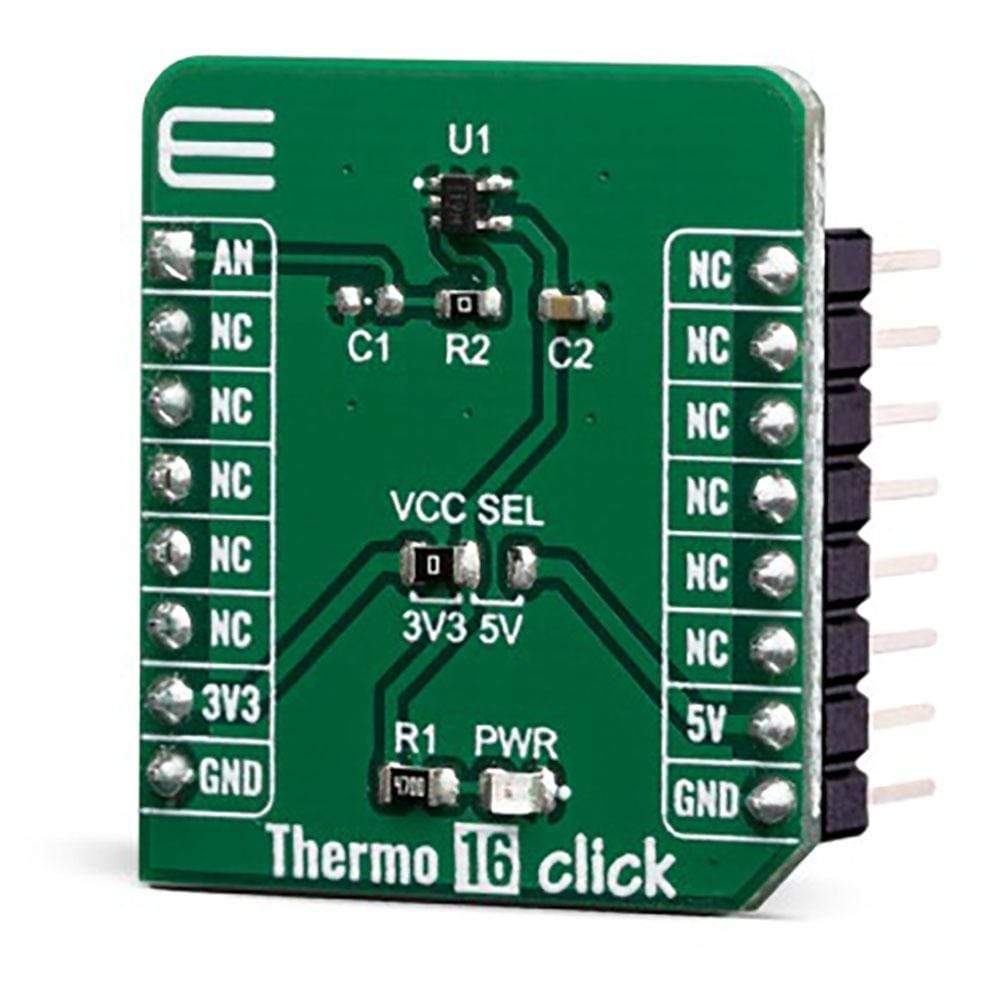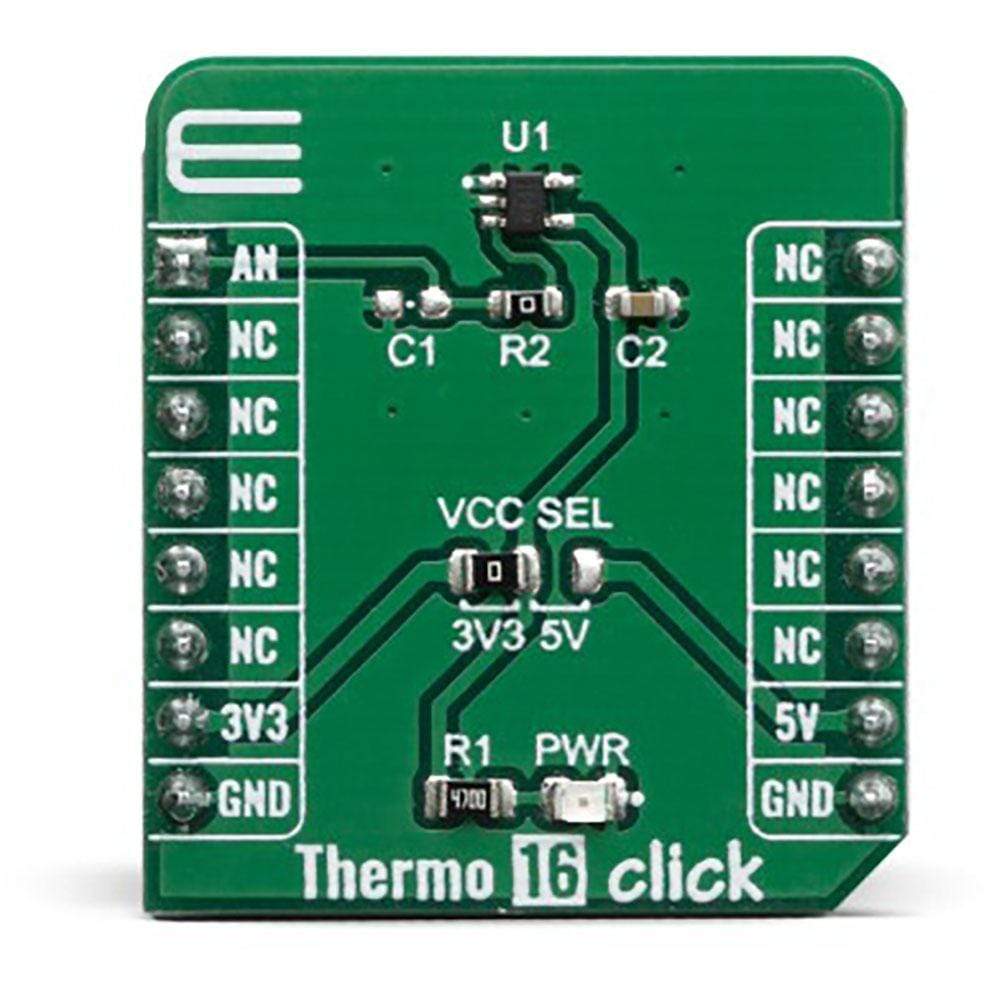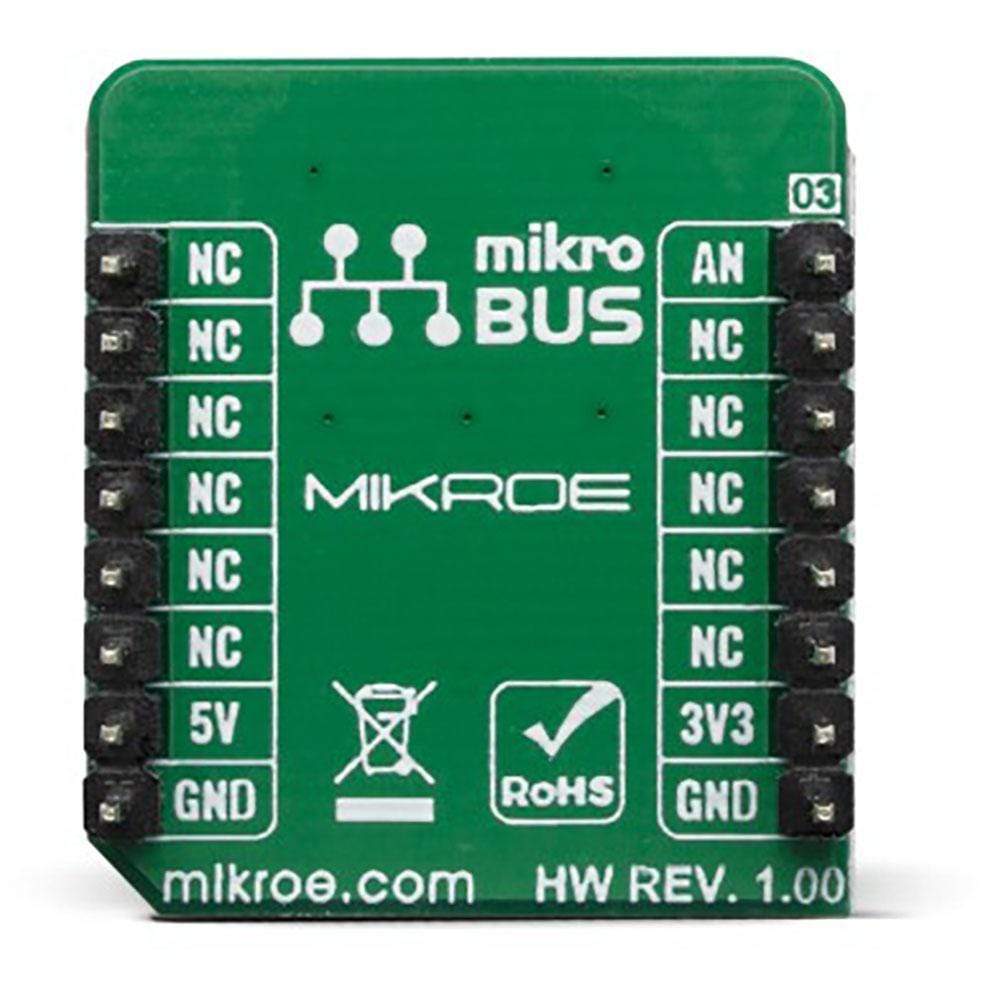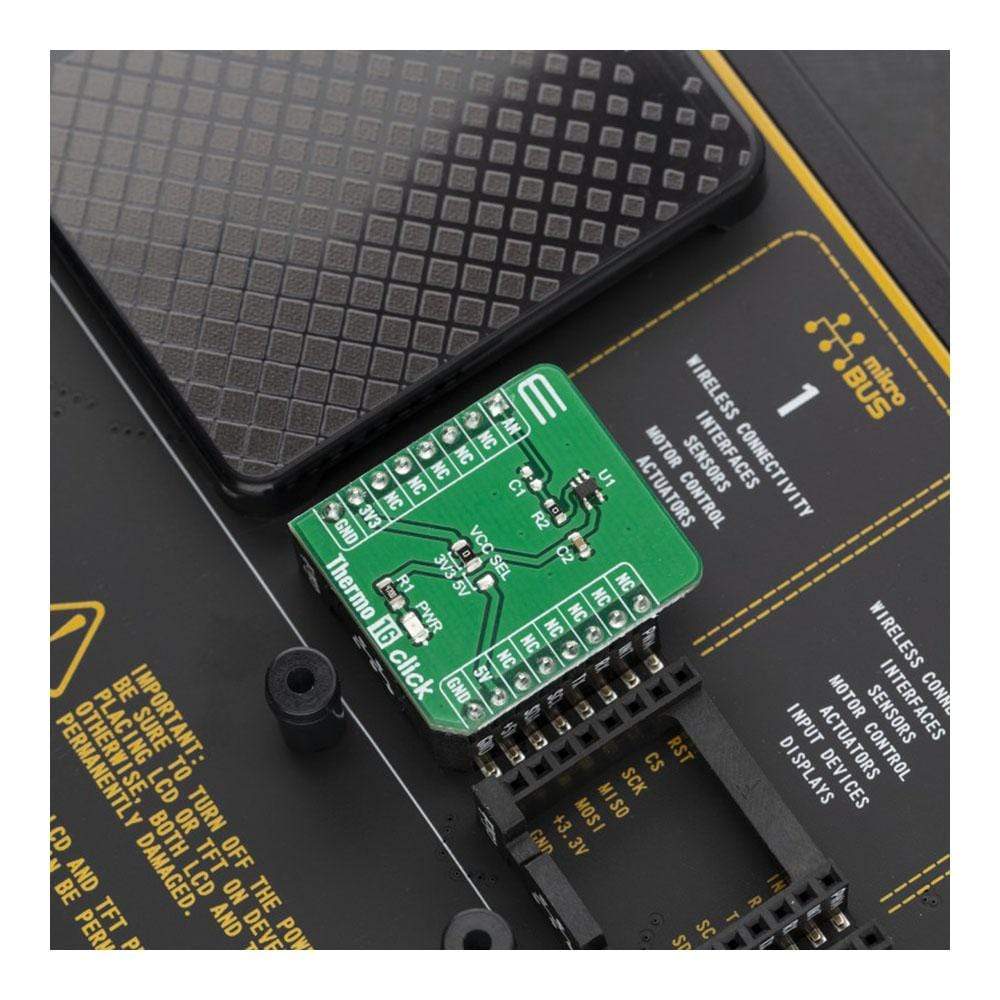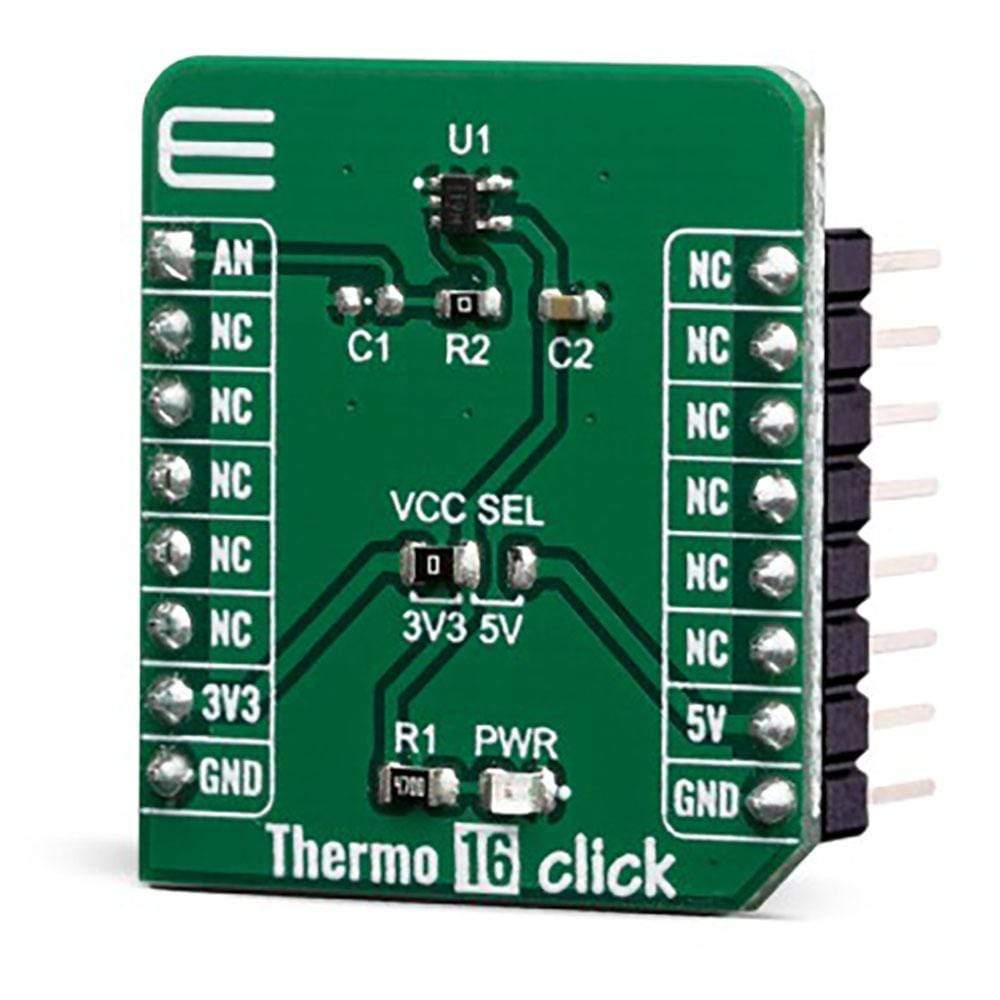
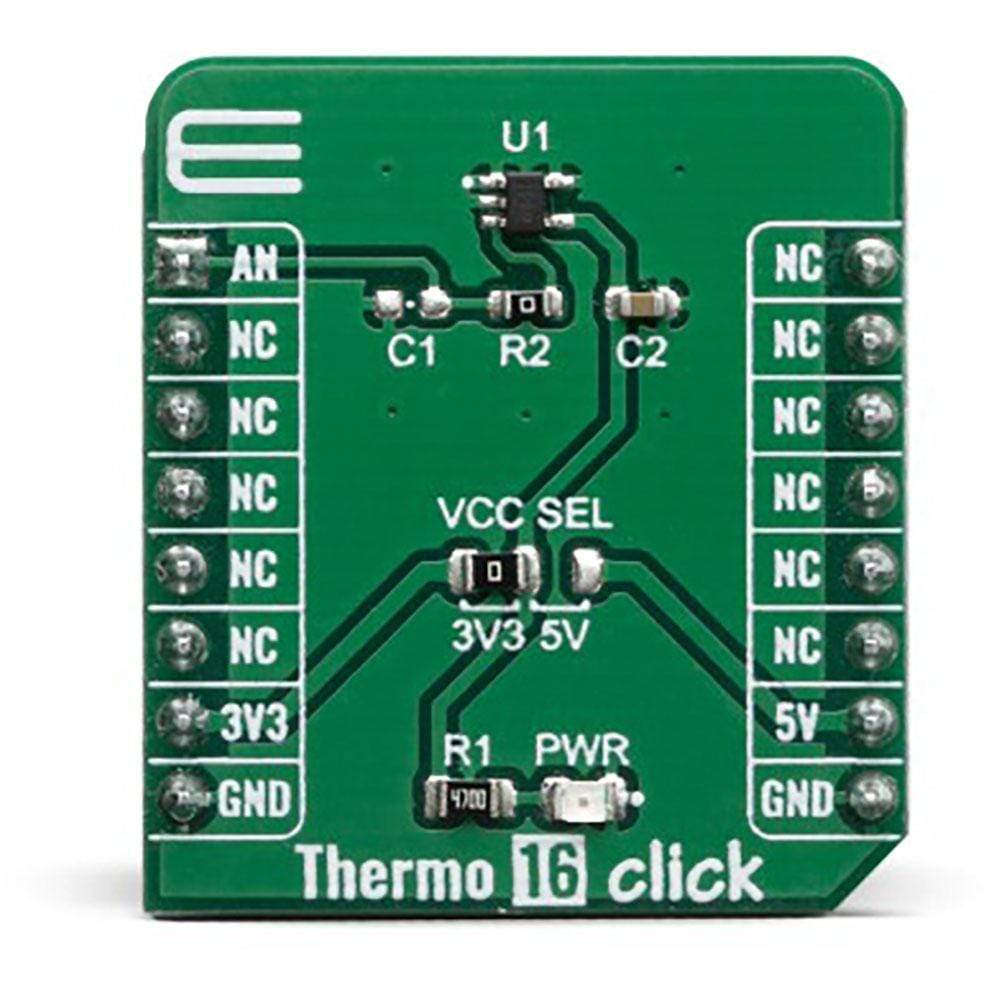
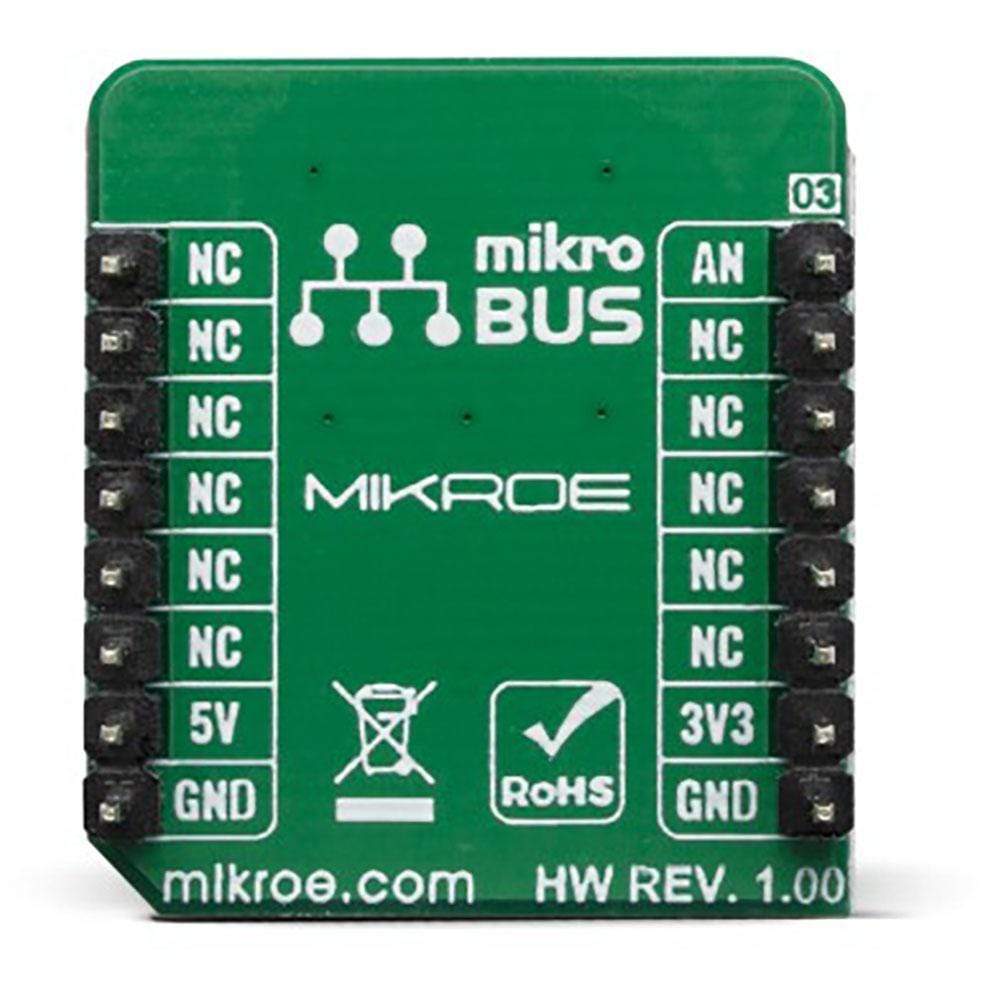

Key Features
Overview
The Thermo 16 Click Board™ is equipped with the sensor IC, which can measure temperature measurements between -40°C and +150°C so that the temperature measurement data can be processed by the host MCU. The Thermo 16 Click Board™ provides an accuracy of ±1°C in the range from 0°C to 70°C. The sensor used on this Click board™ has a great combination of features that make it a perfect choice for any temperature measurement application: Analog signal output, low power consumption, compact sensor size, and more. The sensor itself requires almost no external components, which simplifies the design, reducing the cost and cutting the time to market.
Downloads
Le Thermo 16 Click Board™ est équipé d'un circuit intégré de capteur, qui peut mesurer des températures entre -40 °C et +150 °C afin que les données de mesure de température puissent être traitées par le microcontrôleur hôte. La carte Thermo 16 Click Board™ offre une précision de ±1°C dans la plage de 0°C à 70°C. Le capteur utilisé sur cette carte Click™ présente une excellente combinaison de caractéristiques qui en font un choix parfait pour toute application de mesure de température : sortie de signal analogique, faible consommation d'énergie, taille de capteur compacte, etc. Le capteur lui-même ne nécessite presque aucun composant externe, ce qui simplifie la conception, réduit les coûts et réduit les délais de mise sur le marché.
| General Information | |
|---|---|
Part Number (SKU) |
MIKROE-3662
|
Manufacturer |
|
| Physical and Mechanical | |
Weight |
0.017 kg
|
| Other | |
Country of Origin |
|
HS Code Customs Tariff code
|
|
EAN |
8606018716456
|
Warranty |
|
Frequently Asked Questions
Have a Question?
Be the first to ask a question about this.

